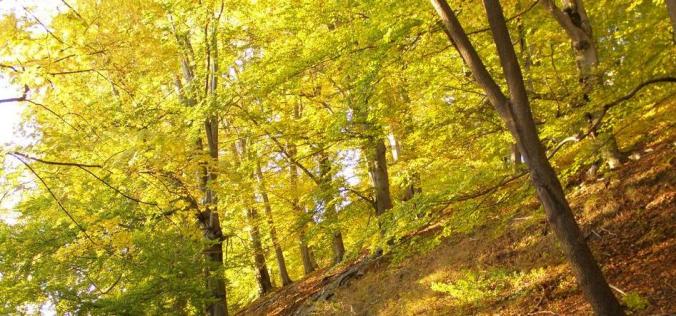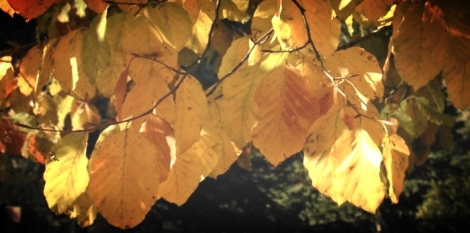Originally published in Amon Hen, a publication of the Tolkien Society.
The forest of Lothlórien, Middle-Earth’s loveliest woodland realm, may well have been inspired by the parks at the University of Oxford, where Tolkien taught for most of his life. Even casual Tolkien scholars know Lothlórien is dominated by mallorn trees, but what can arboriculture tell us about these fictional plants?
Mallorn trees are not indigenous to Middle-Earth. They were brought to Lindon during the Second Age via assisted colonization, where they failed to take root. Later, Galadriel took mallorn seeds east of the Misty Mountains and planted a forest she named Lórinand (“Valley of Gold”) after the leaves of the mallorn, which became Lothlórien in the Third Age [1].
We know from The Lord of the Rings that mallorn trees are tall, gold-leafed, and silver-trunked [2], but Tolkien’s most telling description lies in Unfinished Tales of Númenor and Middle-Earth:
Its bark was silver and smooth, and its boughs somewhat upswept after the manner of the beech…its leaves, like those of the beech but greater, were pale green above and beneath were silver, glistening in the sun; in the autumn they did not fall, but turned to pale gold. In the spring it bore golden blossom in clusters like a cherry, which bloomed on during the summer; and as soon as the flowers opened the leaves fell, so that through spring and summer a grove of malinorni was carpeted and roofed with gold [3].
So Lothlórien is essentially an English Lowlands beech forest (pictured above), not unlike Greater London’s Epping Forest or Oxfordshire’s Wychwood. Knowing that the mallorn is an elven form of beech tree does much to clarify the plant’s history, behavior, and significance.
For example, mallorn trees probably failed to take root in Lindon on the western shores of Middle-Earth because of a wet climate. Beeches don’t grow well in water-logged soil, and Lindon lies between the Great Sea and the Blue Mountains, so it’s likely to receive a good deal of rain due to orographic lift, just like the Pacific Northwest of the United States.
And the mallorn‘s seemingly magical ability to keep its leaves through autumn and winter? Actual beech trees do the same thing. It’s called marcescence. Some deciduous trees, including beeches, hold onto their leaves year-round to deter animals from snacking on their twigs.
However, the mallorn trees in Lothlórien–while smaller than their ancestors in Númenor and Tol Eressëa–are quite a bit taller than real-life beeches, especially in Caras Galadhon, the “Fortress of Trees” where Galadriel and Celeborn dwelled. At a height and breadth of 400 feet [4], they’re four to five times taller than the average European beech, and would tower over California’s redwoods (Sequoiadendron giganteum and Sequoia sempervirens, the tallest of which was 379 feet). The leaves, too, were larger than the 2- to 4-inch leaves of beeches (the better to wrap lembas bread, of course).
Finally, the University Parks at Oxford are littered with beech trees, particularly cultivars of European beech (Fagus sylvatica) like Copper beech and Pendulous beech. We know Tolkien had a deep love of nature, and his passion for wood-walking is evident in the work he left behind. Perhaps his Oxford strolls inspired the gold valley of Lothlórien, and the namesake of the Tolkien Society’s annual journal.
1. Tolkien, J. R. R. Unfinished Tales of Númenor and Middle Earth. 168.
2. Tolkien, J. R. R.The Lord of the Rings. 335. 50th Anniversary ed.
3. Ibid. 2, 167.
4. Fonstad, Karen Wynn. The Atlas of Middle-Earth. 130. Rev. ed.


